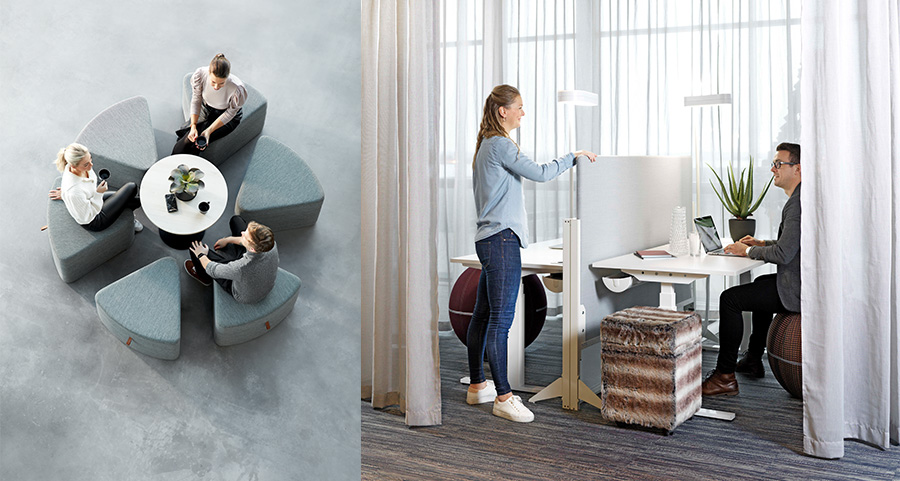

Work environment can be divided into three areas: the physical work environment such as noise, chemicals and working postures; the psychological work environment with tasks, leadership and stress; as well as the social work environment that deals with personal development and the interaction between colleagues.
All factors are important for the working day to be as good as possible. Here are 5 tips on how to create a pleasant work environment:
Speak about it
Normalize talking about the work environment with employees. Include it in the agenda in several forums: weekly meetings, management meetings, development talks. Talk about how the workplace is perceived, both the physical premises, IT equipment and the organization of the work. The results are used in the follow-up and evaluation of the organization's work environment.
The balance between work and leisure
Work-life balance is becoming an increasingly important factor for many employees. It simply means that the private part of everyday life becomes more compatible with work, and is about organization, routines and working hours. Try to make the organization adaptable as much as possible to, for example, daycare drop-off and opportunities for leisure activities, and remove cultures of working late at night and cultures that emphasize overtime work.
Say hello to your colleagues!
Employees are each other's work environment. A pleasant workplace where employees have good relationships is incredibly important for how you feel. A culture where you greet, smile and chat openly is therefore of the utmost importance.
Include everyone and discriminate no one
Inclusion happens when people see and listen to each other. We include when we take advantage of each other's differences and involve each other, and all this is easier if the company has a culture based on openness, both physically and socially. Diversity and inclusion increase efficiency, problem-solving skills, productivity and cooperation in an organization. Strive to have a workplace with equal gender distribution, ethnic diversity, and educational and skill variations. This can be directly applied to the composition of working groups and teams.
Directly linked to this is the opposite: differential treatment. Bullying and abusive discrimination are serious problems. Make sure you have a culture that doesn't allow either tough jargon or insulting actions.
Arrange activities for employees
Having different social activities in the workplace, both inside and outside working hours, is a good way to increase cohesion among employees and in different teams. It is nice to get to know each other more than just for the profession. It doesn't always have to be conference trips, but an unpretentious AW, Friday coffee, lunch training or a barbecue after work. When you get to know your colleagues better, you will also work better together.

We at Götessons Design Group are passionate about creative and ergonomic workplaces where well-being is the focus.
Hope this article helped you to contribute to a sustainable working day.



